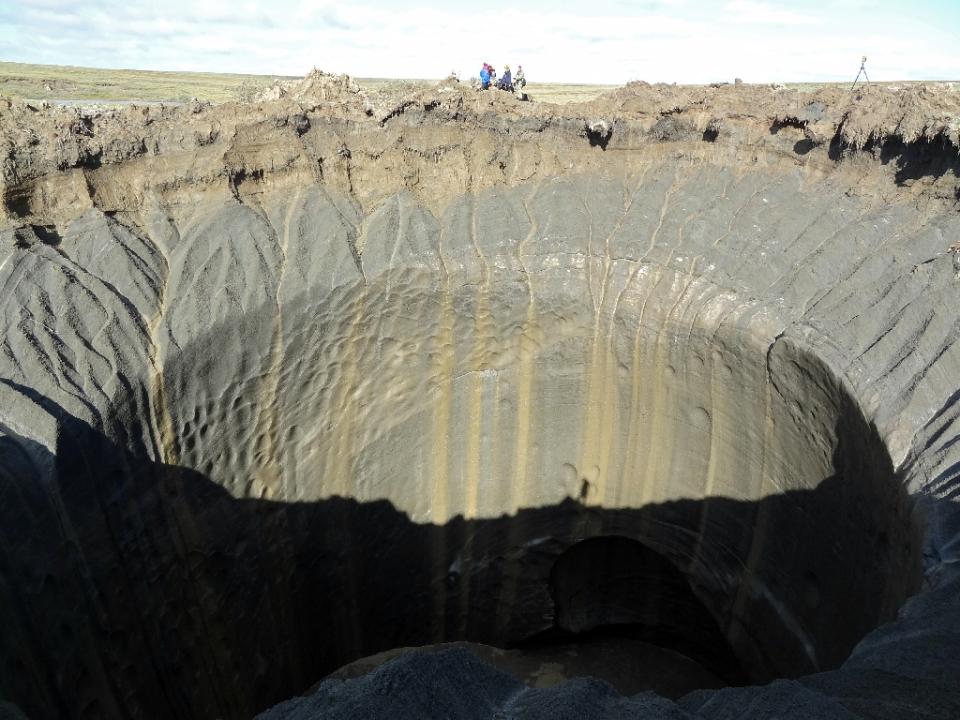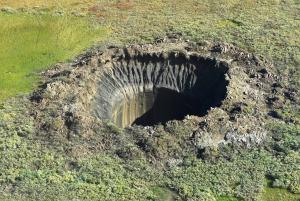1. Gladiators Often1 Fought to Death

Yes, sometimes gladiators died during combat. This happens from time to time when freakishly fast, well-muscled men wielding crazy-looking weapons made of steel face off. But unlike what you’ve seen in Hollywood movies, such as the 2000 film Gladiator starring Russell Crowe and Joaquin Phoenix, gladiators were rarely forced to fight to the death. Why? "They were too valuable," says University of Vienna archaeologist Wolfgang Neubauer. Gladiator owners were sort of like the NFL owners of Ancient Rome. They were businessmen. Would Jerry Jones send Tony Romo out on the field against theNew York Giants without a helmet for the sheer amusement of watching him get his block knocked off? I don’t think so.
2. Columbus Thought the World Was Flat

No. No. No. He didn’t. How did this one ever get started, anyway? I mean, Columbus was traveling west to reach the East Indies. Repeat: West to get East. Do people think he just got lost or confused or something? No, the explorer knew the Earth was round—just not how big the bloody planet is.
3. “Nothing of importance happened today.”

We all know King George III wrote this in his diary on July 4, 1776—the day that became synonymous with America’s independence. Except he didn’t. In fact, British Library museum curator Arnold Hunt tells PBS that the tax-happy British monarch didn’t even keep a diary. The apocryphal anecdote is likely related to a diary entry Louis XVI made on the day France’s Bastille was stormed, kicking off the French Revolution that eventually claimed the Bourbon king and his family.
4. Napoleon Bonaparte Was Short

Maybe by today’s standards. But the five feet seven inches the Corsican stood was average in Europe during the early nineteenth century. So next time you hear someone sound off about “Napoleon Syndrome” you’ll have your Cliff Clavinesque response. “Actually, it's a little known fact that...”
5. 300 Spartans Held Off a Persian Hoard at a Narrow Pass for 3 Days

Well, yes. But they had a heck of a lot of help. History often forgets the 4,000 Greek allies who fought alongside the Spartans before retreating, as well as the 1,500 who stood with the Spartans during their epic last stand. We know your life likely seems to have lost all meaning upon learning this fact. After all, 1,800 doesn't have nearly as cool of a ring as 300.
6. The U.S. has 50 States

Wrong! Virginia, Kentucky, Massachusetts, and Pennsylvania are all...wait for it...commonwealths. What’s the difference? Practically nothing, except for the fact that commonwealth sounds fancier.
7. The Polish Cavalry Charged Against German Armored Divisions During WWII

During the German invasion of Poland in 1939, the poorly equipped Polish Army was said to have resorted to repeated cavalry charges against the armored divisions of their superior German foe. Well, those charges probably never occurred. As Cambridge historian Richard M. Evans writes in his 2009 work "The Third Reich at War," "Stories of Polish cavalry squadrons quixotically charging German tanks were most probably apocryphal." Nevertheless, every now and again you'll see the claim reported in newspapers. Just ask The Guardian who a few years back "had to append a speedy correction [to a column] admitting that we had 'repeated a myth of the second world war, fostered by Nazi propagandists.'" Yep, those imaginary Polish cavalry charges we grew up hearing about likely were the work of Josep Goebbels' propaganda machine.


Yes, sometimes gladiators died during combat. This happens from time to time when freakishly fast, well-muscled men wielding crazy-looking weapons made of steel face off. But unlike what you’ve seen in Hollywood movies, such as the 2000 film Gladiator starring Russell Crowe and Joaquin Phoenix, gladiators were rarely forced to fight to the death. Why? "They were too valuable," says University of Vienna archaeologist Wolfgang Neubauer. Gladiator owners were sort of like the NFL owners of Ancient Rome. They were businessmen. Would Jerry Jones send Tony Romo out on the field against theNew York Giants without a helmet for the sheer amusement of watching him get his block knocked off? I don’t think so.
2. Columbus Thought the World Was Flat
No. No. No. He didn’t. How did this one ever get started, anyway? I mean, Columbus was traveling west to reach the East Indies. Repeat: West to get East. Do people think he just got lost or confused or something? No, the explorer knew the Earth was round—just not how big the bloody planet is.
3. “Nothing of importance happened today.”
We all know King George III wrote this in his diary on July 4, 1776—the day that became synonymous with America’s independence. Except he didn’t. In fact, British Library museum curator Arnold Hunt tells PBS that the tax-happy British monarch didn’t even keep a diary. The apocryphal anecdote is likely related to a diary entry Louis XVI made on the day France’s Bastille was stormed, kicking off the French Revolution that eventually claimed the Bourbon king and his family.
4. Napoleon Bonaparte Was Short
Maybe by today’s standards. But the five feet seven inches the Corsican stood was average in Europe during the early nineteenth century. So next time you hear someone sound off about “Napoleon Syndrome” you’ll have your Cliff Clavinesque response. “Actually, it's a little known fact that...”
5. 300 Spartans Held Off a Persian Hoard at a Narrow Pass for 3 Days
Well, yes. But they had a heck of a lot of help. History often forgets the 4,000 Greek allies who fought alongside the Spartans before retreating, as well as the 1,500 who stood with the Spartans during their epic last stand. We know your life likely seems to have lost all meaning upon learning this fact. After all, 1,800 doesn't have nearly as cool of a ring as 300.
6. The U.S. has 50 States
Wrong! Virginia, Kentucky, Massachusetts, and Pennsylvania are all...wait for it...commonwealths. What’s the difference? Practically nothing, except for the fact that commonwealth sounds fancier.
7. The Polish Cavalry Charged Against German Armored Divisions During WWII
During the German invasion of Poland in 1939, the poorly equipped Polish Army was said to have resorted to repeated cavalry charges against the armored divisions of their superior German foe. Well, those charges probably never occurred. As Cambridge historian Richard M. Evans writes in his 2009 work "The Third Reich at War," "Stories of Polish cavalry squadrons quixotically charging German tanks were most probably apocryphal." Nevertheless, every now and again you'll see the claim reported in newspapers. Just ask The Guardian who a few years back "had to append a speedy correction [to a column] admitting that we had 'repeated a myth of the second world war, fostered by Nazi propagandists.'" Yep, those imaginary Polish cavalry charges we grew up hearing about likely were the work of Josep Goebbels' propaganda machine.
8. Vikings Wore Horned Helmets, Right?
Negative. According to the History Channel, medieval depictions of Viking warriors show the Norsemen “bareheaded or clad in simple helmets likely made of either iron or leather.” So there you have it. Have you ever known the History Channel to get something wrong?
9. Thomas Jefferson Slept With His Slaves
Maybe he did. Then again, maybe he didn’t. Wait, what? Everyone knows Jefferson fathered children with his slave Sally Hemings, you say. Not quite. The most compelling evidence that exists linking the sage of Monticello to Hemings are the results of a 1998 DNA test that show Hemings’ youngest son was fathered by someone in the Jefferson line. Media outlets at the time ran with the story and spun it as proof that the slave-owning Jefferson, the man who penned the Declaration of Independence, was a lecherous hypocrite. Today, the narrative tends to focus not on if the act happened, but whether the alleged act constitutes rape. But, as the Christian Science Monitor has pointed out, any of the “more than two dozen Jefferson men living in Virginia at the time” could have fathered Hemings’ son, Eston...[and] in fact, scholars point to Jefferson’s brother, Randolph, as the likely father of Hemings’ son.”
That’s not to say it’s clear that Jefferson didn’t father Hemings’ child. Just that there is not a preponderance of evidence—circumstantial or physical—that proves Jefferson did. As one Jefferson scholar said, “While we may never know who fathered Eston Hemings, or any of Sally Hemings’ other children, we do this great man in American history a big disservice by prematurely concluding that this centuries-old paternity case has been adequately and responsibly resolved.”












